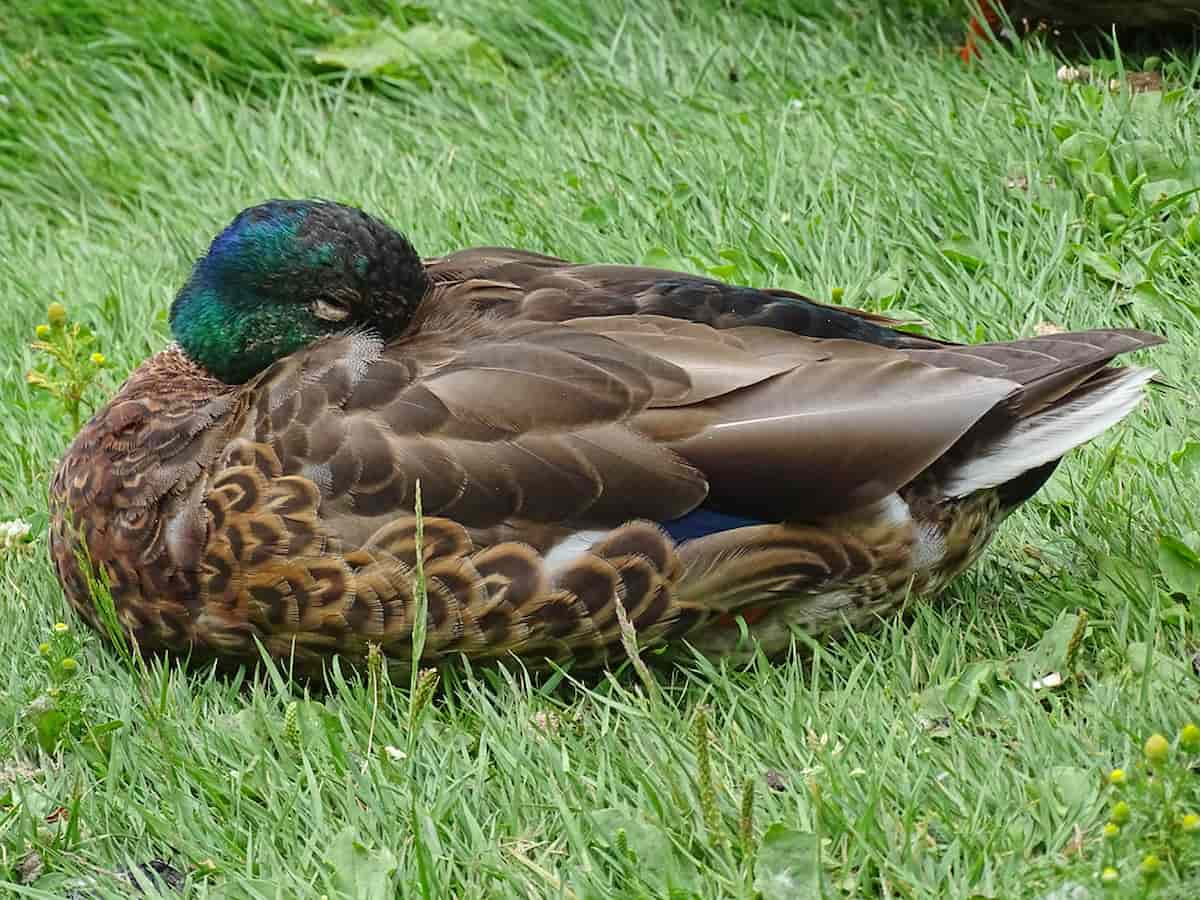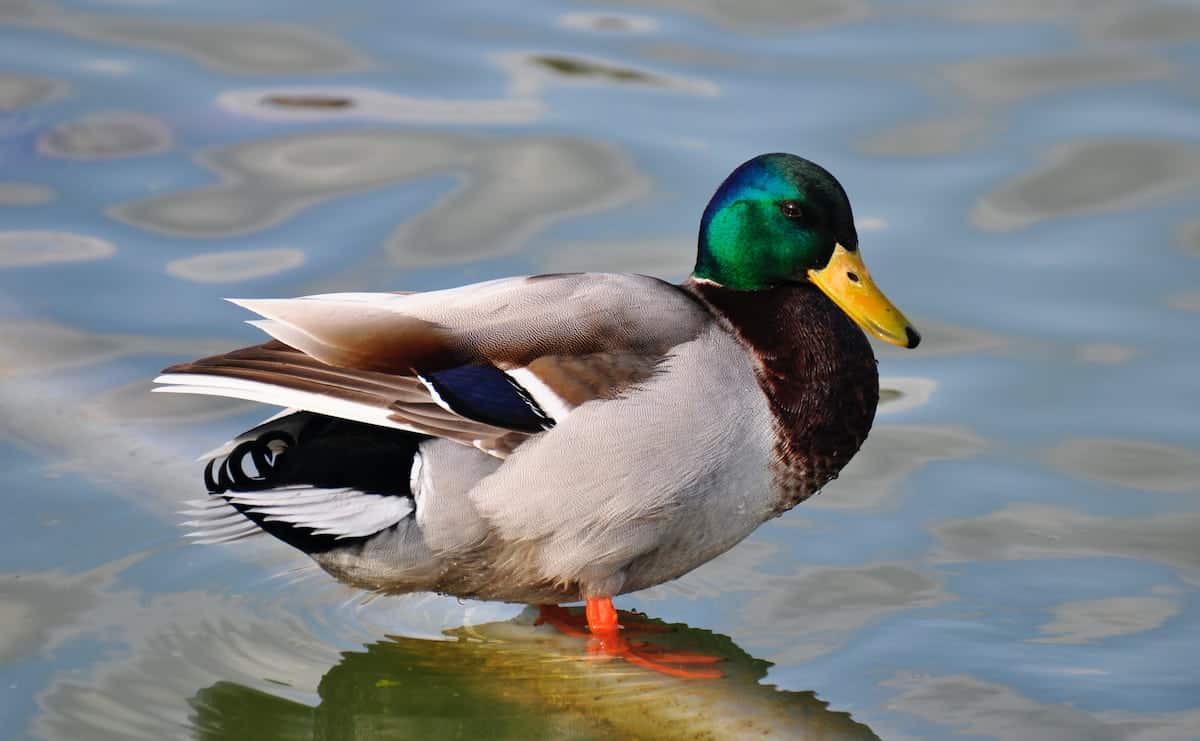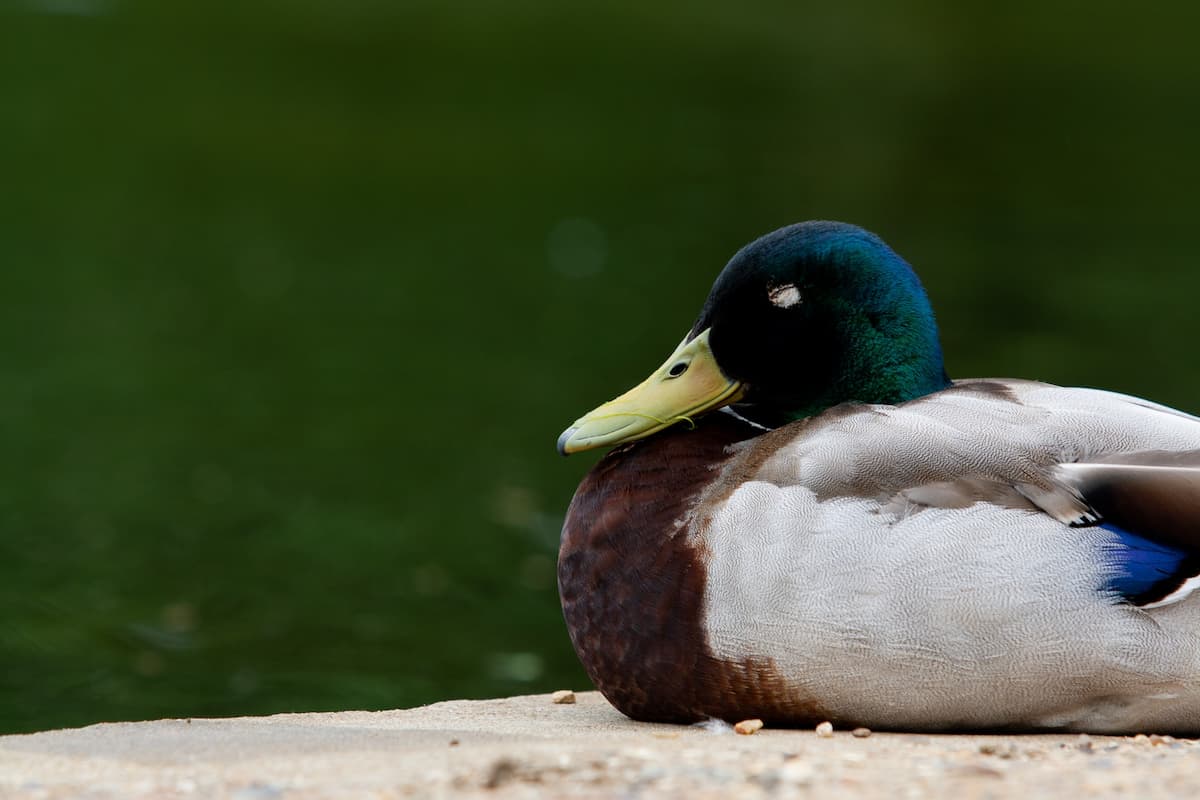Even ducks have to hit the hay. After all, ducks are just like every animal: they need some form of restful sleep to ensure they perform at their best and stay alive. But where do ducks sleep?
When most people think of a ‘duck’, they are probably thinking of a mallard. Mallards are the most widespread duck species in the world and act as a good poster boy for duck-kind.
So, let’s take a look at the different places where mallards and other ducks sleep (it’s more complicated than you think!).
Where do ducks sleep?
Ducks are happy sleeping in various locations that suit them. They just need to find areas that provide enough shelter from the weather and are safe from predators like foxes and birds of prey.
Domestic ducks are quite happy to sleep in a coop, huddled together. In fact, wild ducks will often huddle together to sleep and conserve body heat as well. This is an effective way to ensure group survival.
Mallards, in particular, are very adaptable and have become well-adjusted to living in urban environments alongside humans all around the world. Though they would prefer to live and sleep near bodies of water, that is not always the case and they can easily adapt.
You may often see ducks sleeping along the banks of rivers and lakes almost everywhere you go. They usually gather in groups to sleep whether they are on land or the water – there is safety in numbers after all!
Can ducks swim and sleep at the same time?
Yes, ducks can sleep and swim at the same time! Although, it’s less swimming and more staying afloat if you want to get technical.
If the weather is calm, you will often catch ducks sleeping on the water at night. Birds of prey, like hawks, that could easily target them out on the water also sleep during the night, so ducks don’t have to worry about aerial threats at this time. Meanwhile, foxes and other land-based predators that are nocturnal will have a hard time getting to the sleeping ducks out on the water.
In fact, sleeping on the water provides its own version of an ‘early warning system’ for ducks. A sleeping duck will easily be able to feel the vibrations of an approaching predator through the water and be able to fly to safety at a moment’s notice!
Do ducks sleep on one leg?
When ducks aren’t sleeping on the water, you will probably see them either squatting down on the ground or standing up on one leg, also known as ‘unipedal resting’. This is an adaptation that allows them to sleep standing up almost anywhere!
Unipedal resting is all to do with conserving body heat and keeping their body temperature consistent whilst they sleep, just in case the elements turn against them.
Feathers don’t cover the legs of a duck, so they are one of the main areas of a duck’s body where heat is lost. This adaptation of sleeping on one leg allows one leg to remain warmly tucked up in the duck’s feathers, remaining close to the warm body, minimising heat loss.
Ducks’ legs also have a special adaptation called ‘rete mirabile’, which means that the arteries (bringing warm blood to their legs) and veins (sending cool blood back to their hearts) are next to each other. This allows the arteries to warm their veins and vastly reduces the heat lost while the duck sleeps. It’s also great for swimming in – and sleeping on the surface of – colder water.
Conclusion
Ducks are extremely adaptable birds and can sleep almost anywhere that is reasonably safe, sheltered, and away from predators.
They are comfortable sleeping either on the water and bobbing on the surface, or sleeping on land, either standing up on one leg or squatting down to conserve body heat. They’re also happy to find places to sleep within urban environments, meaning you might often see a duck out and about.
All ducks really need for a suitable place to sleep is somewhere sheltered, warm, and with as few predators around as possible.





